April 1, 2009
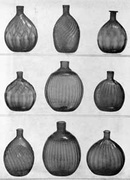
This article on Ohio and Midwestern glasshouses in the early 19th century focuses on techniques, designs, patterns, and types of wares made, as well as including a list of glasshouse towns and glassmakers. It originally appeared in the November 1940 issue of American Collector magazine, a publication which ran from 1933-1948 and served antique collectors and dealers.
Among collectors, the blown glass which was made at the early glasshouses of Ohio and the Midwestern district has … (continue reading)

This article describes an exhibition on Paul Revere at the Museum of Fine Arts in Boston that was being showcased at the time the article was published. It notes the items on display, from Revere’s church silver to domestic items, and explains the relevance of each to his life. It originally appeared in the August 1942 issue of American Collector magazine, a publication which ran from 1933-1948 and served antique collectors and dealers.
A special exhibition, “The … (continue reading)
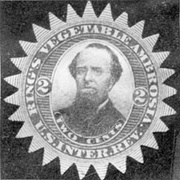
This article focuses on revenue stamps and private proprietary stamps used in the U.S. in the 19th century, noting the values (such as one cent, two cent, and three cent) and colors (such as black, green, and orange) and describing examples of products that were required to use the stamps and the designs the companies chose. It originally appeared in the September 1943 issue of American Collector magazine, a publication which ran from 1933-1948 and served … (continue reading)
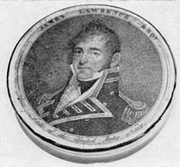
This article focuses on papier-mache snuff boxes made for the American market after the War of 1812, which featured imagery of U.S. naval heroes and naval engagements. It originally appeared in the September 1945 issue of American Collector magazine, a publication which ran from 1933-1948 and served antique collectors and dealers.
Papier-mache, despite its French name, originated in China where it was made for many generations before its European advent. It became an industry in England in … (continue reading)
March 28, 2009
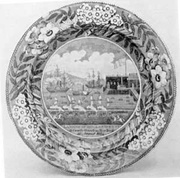
This article discusses the popular china made in Staffordshire, England in the 18th and 19th centuries and includes information about the designs and American historical themes that were popular. It originally appeared in the August 1941 issue of American Collector magazine, a publication which ran from 1933-1948 and served antique collectors and dealers.
One thing suggests another in antique collecting, as with anything else. The person who buys a piece of antique furniture is apt to follow it … (continue reading)
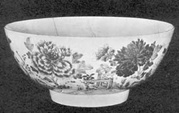
This article discusses the history of porcelain known as Oriental Lowestoft, detailing its notable characteristics, available colors and designs, and the differentiation between periods. It originally appeared in the August 1938 issue of American Collector magazine, a publication which ran from 1933-1948 and served antique collectors and dealers.
Through sheer longevity and persistence, the term Oriental Lowestoft has become the designation for all Chinese porcelain made expressly for export. It covers a broad field and extends over … (continue reading)
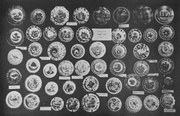
This article notes some of the rarities found in china items, which are highly sought-after by the avid collector. It originally appeared in the December 1941 issue of American Collector magazine, a publication which ran from 1933-1948 and served antique collectors and dealers.
It is always a matter of pleasure to collectors, who visit antiques shows, to find the commercial aspect made somewhat less obtrusive by the presence of educational exhibits. The managers of the larger shows … (continue reading)

This article, originally published in two parts, discusses the history of notable yet under-recognized cabinetmakers from Salem, also noting the economic history and community of craftsmen in the city. Part Two focuses on Elijah and Jacob Sanderson’s lives and work. It originally appeared in the August and September 1939 issues of American Collector magazine, a publication which ran from 1933-1948 and served antique collectors and dealers.
Part I:
For at least thirty years students of American craftsmanship have … (continue reading)
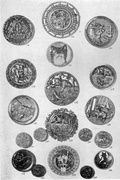
This article notes the evolution of buttons from crudely-made items using bones to fashionable and elaborate 16th-century accessories to sporting and story buttons, popular in the 18th and 19th centuries. Using the images provided, it describes buttons with animal motifs that are both common and scarce. It originally appeared in the May 1943 issue of American Collector magazine, a publication which ran from 1933-1948 and served antique collectors and dealers.
The ancestor of the modern … (continue reading)
March 27, 2009

This article discusses primitive American portraits, which were thought crude and undesirable until the 1920s when they became a popular furnishing in country homes. It originally appeared in the August 1942 issue of American Collector magazine, a publication which ran from 1933-1948 and served antique collectors and dealers.
Various articles on what and how to collect have stressed the importance of broadening one’s interest. “Remember,” says one writer, “that the neglected antique of today may become the sought-after … (continue reading)
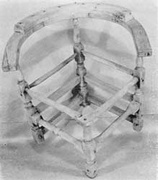
This article focuses on corner (or roundabout) chairs, a comfortable chair first popular in England in the 18th century. It notes that no two corner chairs look alike and lists the top reasons why they are desirable. It originally appeared in the October 1941 issue of American Collector magazine, a publication which ran from 1933-1948 and served antique collectors and dealers.
(American Collector Editor’s Note: Some three years ago Mr. Millar, a general collector of American antiques, became … (continue reading)
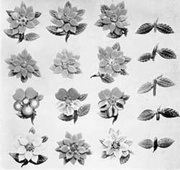
This article describes the designs and different variations of paperweights created by Nicholas Lutz at the Boston and Sandwich Glass Company. It originally appeared in the August 1941 issue of American Collector magazine, a publication which ran from 1933-1948 and served antique collectors and dealers.
More than one veteran collector of American glass, particularly Sandwich, will be surprised to learn that a workman at the Boston and Sandwich Glass Company made, among other things, artistic glassware … (continue reading)
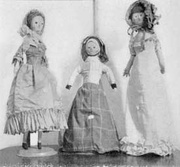
This article discusses the history of dolls, noting their multiple uses (from religion to fashion) and their spread across the world. It originally appeared in the December 1942 issue of American Collector magazine, a publication which ran from 1933-1948 and served antique collectors and dealers.
In a New England parlor of the 1890s a doll of the period was perched on top of a high book case, well out of the reach of grimy childish hands. From … (continue reading)
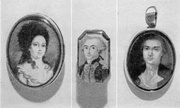
This article discusses the various types of fine jewelry that was popular among 18th-century Americans, using advertisements written by jewelers and notices written by Americans who had lost precious pieces as examples. It was originally published as a two-part series in the March and April 1941 issues of American Collector magazine, a publication which ran from 1933-1948 and served antique collectors and dealers.
Part I:
“Deer’s Foot — Lost on Tuesday last the 12 Instant at Boston, a … (continue reading)
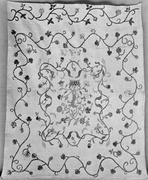
This article focuses on quilts, which were first created as early as the 16th century. It notes the various designs and the production process. It originally appeared in the November 1941 issue of American Collector magazine, a publication which ran from 1933-1948 and served antique collectors and dealers.
The antique quilts which collectors admire today for their colorfulness and variety of design represent two of the oldest forms of needlecraft. They are quilting and patchwork and were … (continue reading)















 Early Ladies Wristwatches: When Beauty Came Before Function
Early Ladies Wristwatches: When Beauty Came Before Function Heavenly Metal: How Trench Art Keeps the Memories of Soldiers and Their Service Alive
Heavenly Metal: How Trench Art Keeps the Memories of Soldiers and Their Service Alive Bloodletting, Bone Brushes, and Tooth Keys: White-Knuckle Adventures in Early Dentistry
Bloodletting, Bone Brushes, and Tooth Keys: White-Knuckle Adventures in Early Dentistry The Silver Trail: How An Italian Immigrant Made His Mark on Southwestern Jewelry
The Silver Trail: How An Italian Immigrant Made His Mark on Southwestern Jewelry The Charms of Christmas Ephemera and the Changing Face of Santa Claus
The Charms of Christmas Ephemera and the Changing Face of Santa Claus Mari Tepper: Laying it on the Line
Mari Tepper: Laying it on the Line Nice Ice: Valerie Hammond on the Genteel Charm of Vintage Canadian Costume Jewelry
Nice Ice: Valerie Hammond on the Genteel Charm of Vintage Canadian Costume Jewelry How Jim Heimann Got Crazy for California Architecture
How Jim Heimann Got Crazy for California Architecture Modernist Man: Jock Peters May Be the Most Influential Architect You've Never Heard Of
Modernist Man: Jock Peters May Be the Most Influential Architect You've Never Heard Of Meet Cute: Were Kokeshi Dolls the Models for Hello Kitty, Pokemon, and Be@rbrick?
Meet Cute: Were Kokeshi Dolls the Models for Hello Kitty, Pokemon, and Be@rbrick? When the King of Comedy Posters Set His Surreal Sights on the World of Rock 'n' Roll
When the King of Comedy Posters Set His Surreal Sights on the World of Rock 'n' Roll How One Artist Makes New Art From Old Coloring Books and Found Photos
How One Artist Makes New Art From Old Coloring Books and Found Photos Say Cheese! How Bad Photography Has Changed Our Definition of Good Pictures
Say Cheese! How Bad Photography Has Changed Our Definition of Good Pictures Middle Earthenware: One Family's Quest to Reclaim Its Place in British Pottery History
Middle Earthenware: One Family's Quest to Reclaim Its Place in British Pottery History Fancy Fowl: How an Evil Sea Captain and a Beloved Queen Made the World Crave KFC
Fancy Fowl: How an Evil Sea Captain and a Beloved Queen Made the World Crave KFC